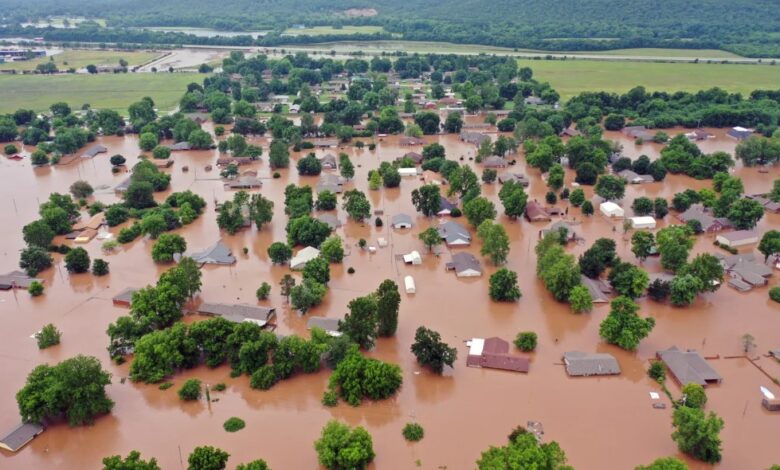Oklahoma tribal nations may feel the brunt of climate change

|
Listen to this article here |
Tribal nations across Oklahoma are likely to feel the most severe effects of a changing climate, a new study suggests.
That case study, published by the University of Oklahoma, focuses on the risk posed by heavy rains and increased flooding.
Yang Hong, the study’s corresponding author, says that risk is “imminent”.
“Indigenous communities are grappling with an imminent climate crisis, compounded by systemic injustices,” Hong wrote.
The study suggests that too little research exists to understand the full scope of how climate change will affect Native communities. To remedy that, the team from OU projected potential heavy rainfall, two-year floods, and flash floods in tribal nations.
The results showed remarkably higher vulnerabilities for Native communities, compared to the rest of the state.
“Indigenous people are the most vulnerable community in Oklahoma,” with regard to climate change, the study found.
Indigenous communities are more than 60% more likely to be affected by increased heavy rainfall and flooding risks.
National study also suggests Oklahoma to face worsening effects of climate change.
The study comes weeks after the latest National Climate Assessment also showed increasing threats to the state.
In short, much of Oklahoma’s climate is getting drier and hotter.
Another study from the University of Oklahoma suggests portions of the state’s climate could see between 30 and 60 days with temperatures hitting 100 degrees or higher by the end of the century.
These hot, dry days are increasingly likely to be interrupted by strong storms that bring torrential rains. The combination of short bursts of heavy rain and dry ground increase the threat of flash flooding, as the dry soil is unable to absorb the water fast enough.
All of this, according to the National Climate Assessment, will affect different communities in different and often unequal ways across Oklahoma.
Rural communities will suffer the effects of enhanced threats of drought, crop and livestock loss and grass fires.
In urban communities, neighborhoods without adequate tree coverage will increasingly become “heat islands”. There, the lack of shade allows the heat from the sun to absorb into asphalt and concrete, further heating the air.
These disperate impacts can be mitigated with a strong, concerted effort to reduce greenhouse gas emissions. But that window of opportunity, experts warn, is quickly shutting.
Source link : theblackwallsttimes.com
























































